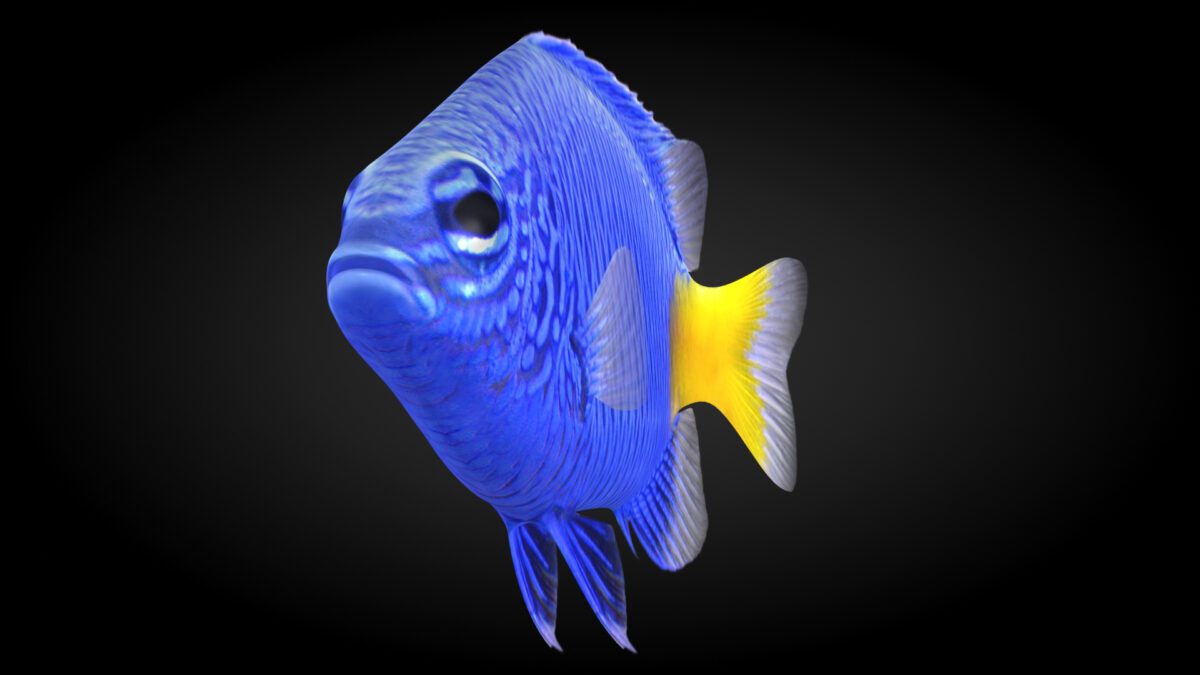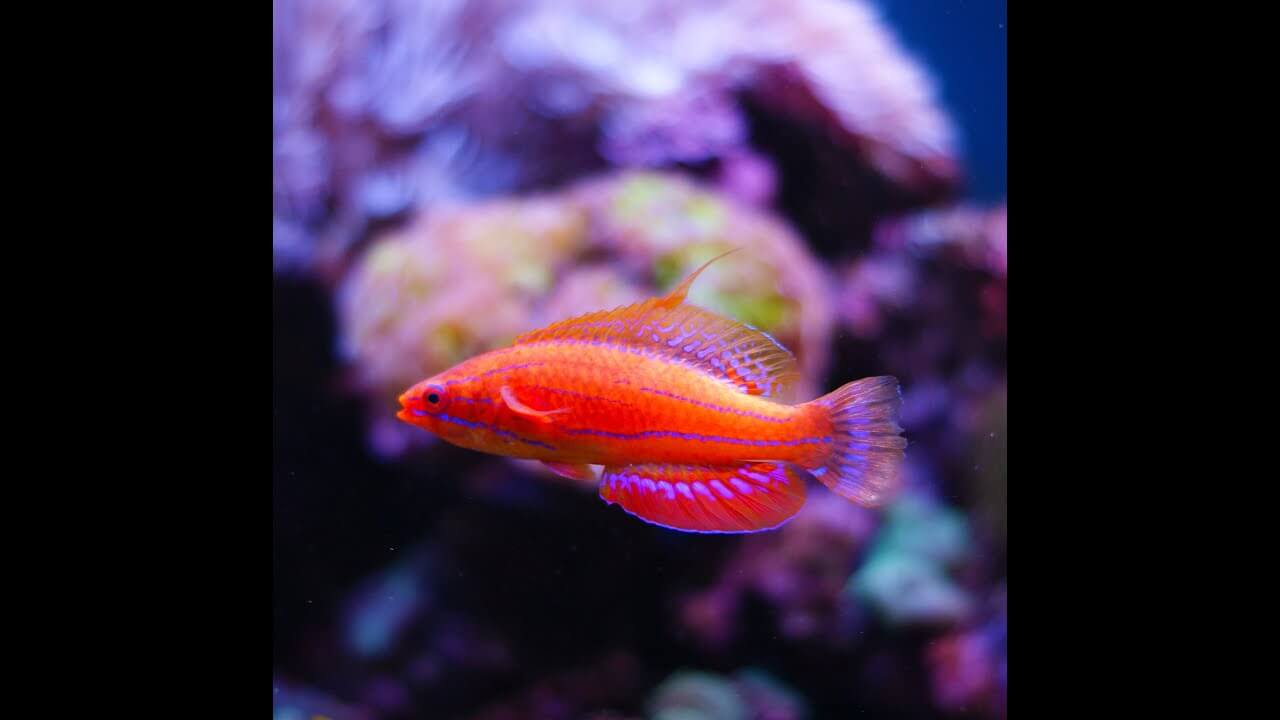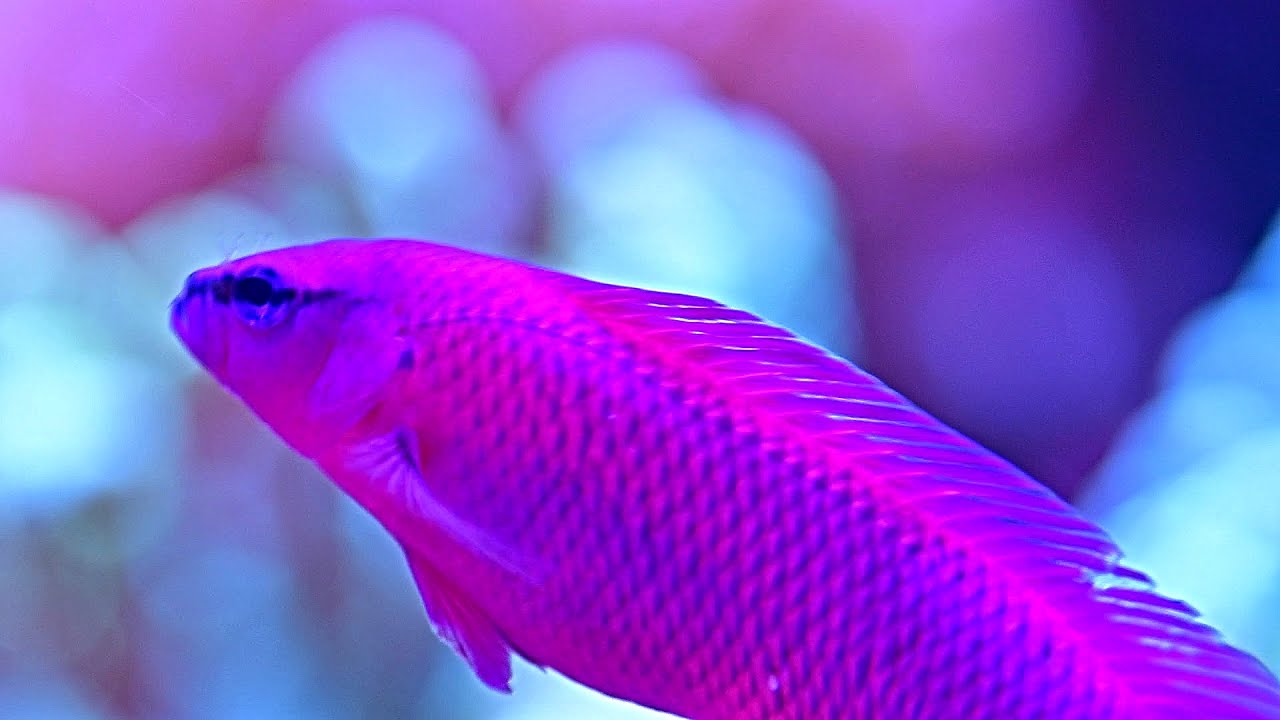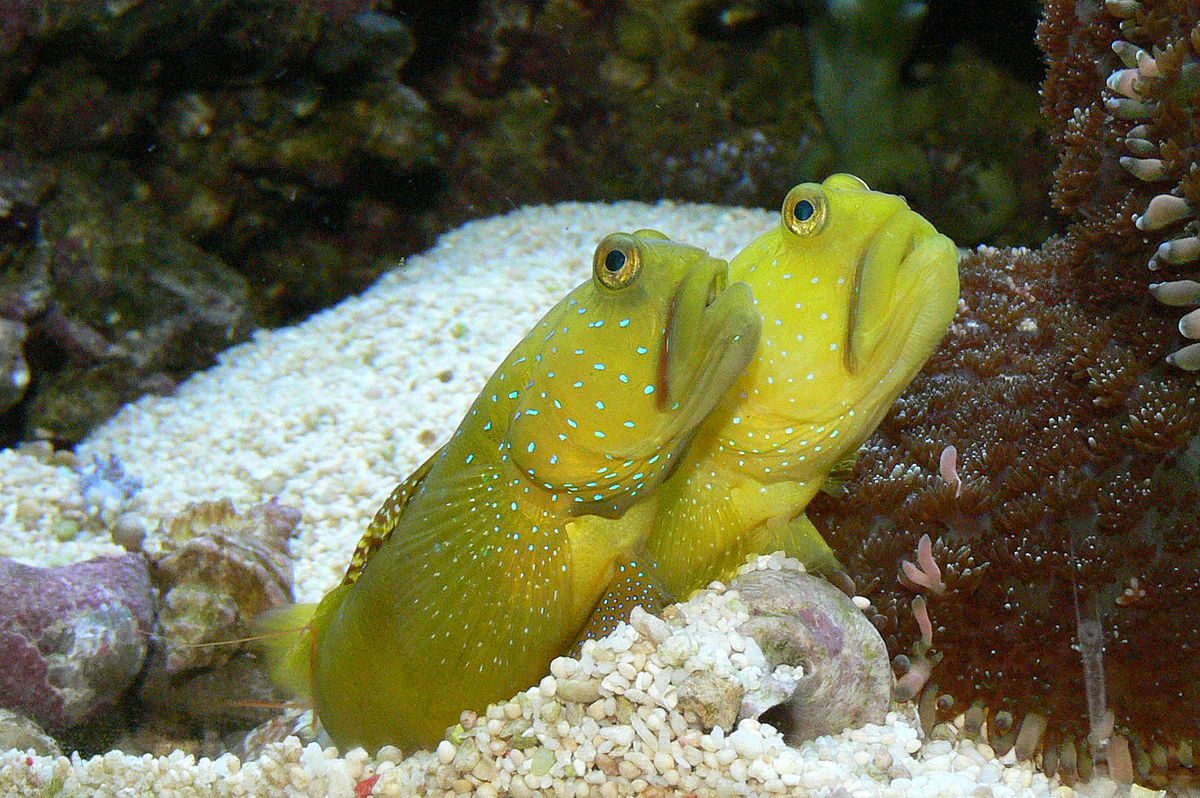G’day everyone! Today, we’re diving into the fascinating world of the Yellowtail Damselfish, scientifically known as Chrysiptera parasema. If you’re a saltwater aquarium enthusiast looking to add vibrant colour to your tank, this species might be just what you’re looking for. With its stunning blue hue and an eye-catching yellow tail, the Yellowtail Damselfish is a true beauty of the sea.
In this comprehensive species guide, we’ll cover everything you need about caring for Yellowtail Damselfish in your saltwater aquarium. We’ve covered you, from taxonomy and physical characteristics to tank requirements and breeding. Let’s dive in!
Key Takeaways:
- The Yellowtail Damselfish, or Chrysiptera parasema, is a visually striking addition to any saltwater aquarium.
- Its vibrant blue colouration and distinctive yellow tail make it popular among aquarists.
- Yellowtail Damselfish have specific care requirements, including tank size, water parameters, and suitable tank mates.
- Diet and feeding habits are crucial to their health, and we’ll provide recommendations for ensuring a balanced and nutritious diet.
- If you’re interested in breeding Yellowtail Damselfish, we’ll discuss their breeding behaviour and the challenges you may encounter.
Introduction – Yellowtail Damselfish
In the introduction section of this species guide, we will delve into the taxonomy and classification of the Yellowtail Damselfish. First, explore its scientific name, Chrysiptera parasema, and its placement within the animal kingdom.
Taxonomy and Classification
The Yellowtail Damselfish, scientifically known as Chrysiptera parasema, belongs to the family Pomacentridae and the order Perciformes. The genus Chrysiptera includes several species of damselfish known for their vibrant colours and attractive markings. Within the Chrysiptera genus, the species parasema, commonly called the Yellowtail Damselfish, stands out for its vivid blue body and distinct yellow tail.
| Characteristic | Description |
|---|---|
| Scientific name: | Chrysiptera parasema |
| Common Names: | Yellowtail Damselfish, Yellow-tail Blue Damselfish, Goldtail Demoiselle |
| Origin: | Western Pacific |
| Family: | Pomacentridae |
| Social: | Semi-aggressive, especially in smaller tanks |
| Domain in tank: | Middle to bottom |
| Minimum tank size: | 30 gallons (114 liters) |
| Diet: | Omnivore |
| Breeding: | Possible in captivity, with specific conditions |
| Care level: | Easy |
| pH Range: | 8.1 – 8.4 |
| Water Hardness: | 8 – 12 dKH |
| Temperature in F/C: | 75-81°F / 24-27°C |
| Common Diseases: | Marine Ich, Marine Velvet |
| Life Span: | Up to 5 years |
| Size: | Up to 3 inches (7.6 cm) |
| Best Tank Mates: | Clownfish, Dwarf Angelfish, Small Gobies, and Wrasses |
Natural Habitat and Distribution
The Yellowtail Damselfish is native to the warm tropical waters of the Indo-Pacific region. Its natural habitat includes coral reefs, lagoons, and rocky coastal areas. These fish can be found in various countries such as Australia, Indonesia, Malaysia, the Maldives, and the Philippines.
Physical Description and Characteristics
Regarding physical appearance, the Yellowtail Damselfish (Chrysiptera parasema) is truly a sight to behold. Its vibrant colors and unique markings make it a standout species in any saltwater aquarium. With its striking blue body and distinct yellow tail, this fish adds a beautiful pop of colour to any aquatic environment.
Colors and Markings
The Yellowtail Damselfish is predominantly blue, with shades ranging from light turquoise to deep navy blue. Its body is adorned with elegant scale patterns, giving it a mesmerizing appearance. A bright yellow colouration stands out at the base of its tail, making it instantly recognizable.
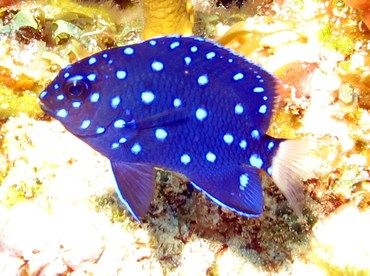
Gender Differences
While there are no significant visual cues to differentiate male and female Yellowtail Damselfish, some subtle differences can be observed. Males tend to be larger and more aggressive, while females are slightly smaller and less territorial.
Varieties
The Yellowtail Damselfish is a single species with no specific varieties or subspecies currently recognized. However, variations in colour intensity and patterns may occur within different populations.
Grades
Unlike other fish species, such as Betta fish, the Yellowtail Damselfish does not have distinct grading systems based on specific characteristics. Each fish is generally appreciated for its health, vitality, and vibrant colouration.
Behaviour and Temperament
Yellowtail Damselfish are known for their lively and active behaviour. They are generally peaceful, though territorial regarding defending their preferred hiding spots. They are often found darting around rock structures and coral reefs, adding a dynamic element to the aquarium.
Aquarium Requirements
Creating the perfect habitat for Yellowtail Damselfish (Chrysiptera parasema) requires careful consideration of their aquarium requirements. This section will discuss the ideal tank size and layout, water parameters, suitable tank mates, and compatibility with live plants and invertebrates.
Ideal Tank Size and Layout
Yellowtail Damselfish are relatively small fish, reaching an average size of 3 inches. To provide them with ample swimming space and territory, it is recommended to house them in a tank with a minimum capacity of 30 gallons. A larger tank will allow for a more natural and comfortable environment.
When designing the tank layout, providing hiding spots and plenty of open swimming space is essential. Including live rock formations and caves will create areas for the fish to explore and seek shelter. Adding corals and other decorative elements can also enhance the visual appeal of the aquarium.
Water Parameters
Maintaining the correct water parameters is crucial for the health and well-being of Yellowtail Damselfish. The recommended temperature range is between 74°F and 78°F (23°C to 26°C). The pH level should be around 8.1 to 8.4, and the salinity should be maintained at 1.020 to 1.025.
Regular water testing and monitoring should ensure these parameters remain stable. Maintaining good water quality by performing regular water changes and using efficient filtration systems is also essential.
Suitable Tank Mates and Potential Conflicts
Yellowtail Damselfish are known to be territorial and can exhibit aggressive behaviour towards other tank mates, significantly smaller fish. It is best to keep them in a species-only tank or include other robust and similarly sized species that can hold their own.
Avoid housing Yellowtail Damselfish with slow-moving or long-finned fish, as they may become targets for aggression. Careful observation should be done when introducing new tank mates to ensure compatibility and minimize conflicts.
Compatibility with Live Plants and Invertebrates
While Yellowtail Damselfish may nibble on certain live plants, they are generally considered safe for a planted aquarium. Hardy and well-established plants such as Java Fern or Anubias are more likely to withstand their grazing behaviour.
When it comes to invertebrates, caution should be exercised. Yellowtail Damselfish may view small crustaceans, such as shrimp and crabs, as potential prey. Therefore, avoiding keeping these invertebrates together with Yellowtail Damselfish is advisable to prevent conflicts.
Yellowtail Damselfish – Care
Diseases
Care is an essential aspect of keeping Yellowtail Damselfish in a saltwater aquarium. Proper care ensures the health and well-being of these vibrant fish. In this section, we will provide insights into the general care requirements for Yellowtail Damselfish and discuss common diseases that can affect them.
When it comes to caring for Yellowtail Damselfish, there are a few key considerations. First and foremost, maintaining water quality is crucial. Regular water testing and appropriate filtration systems are essential for creating a healthy environment for these fish. Maintaining stable water parameters, including temperature, salinity, and pH levels, is also essential.
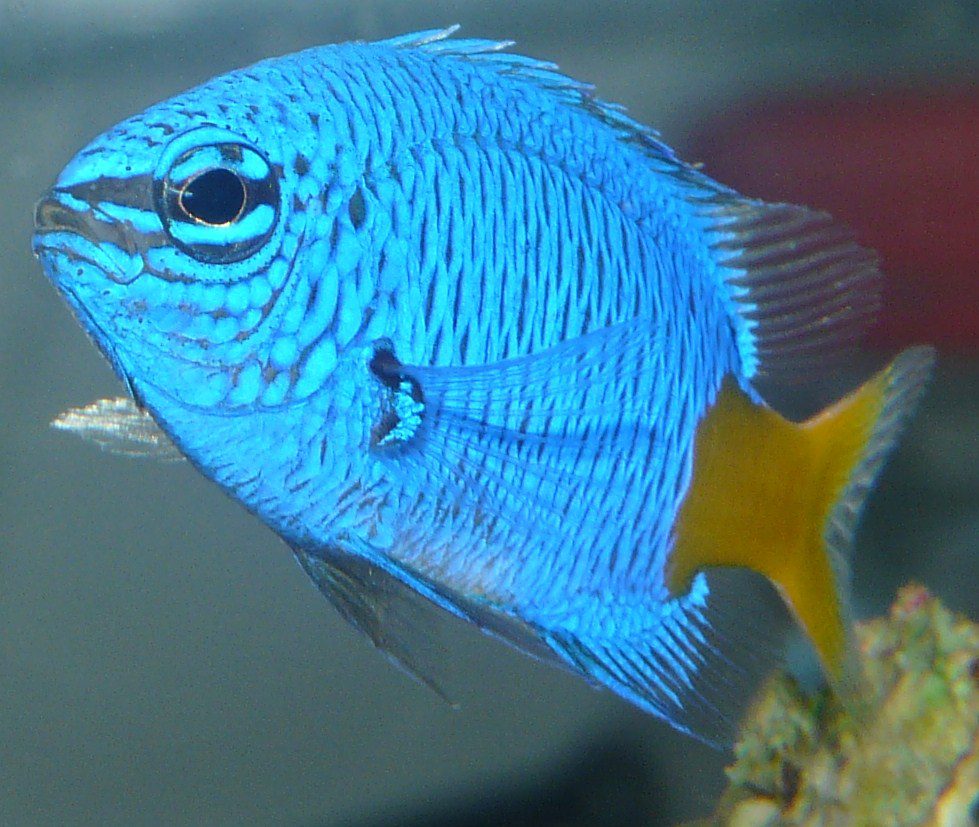
Another critical aspect of care is providing a suitable diet for Yellowtail Damselfish. These omnivorous fish will thrive on a varied diet, including meaty and plant-based foods. High-quality commercial pellets or flakes, supplemented with frozen or live foods such as brine shrimp or mysis shrimp, can provide a well-balanced diet.
While Yellowtail Damselfish are generally hardy and resistant to many diseases, they are still susceptible to certain health issues. Some common diseases affecting these fish include bacterial infections, parasitic infestations, and fungal infections. It is essential to monitor the fish closely for any signs of illness, such as changes in behavior, loss of appetite, or visible symptoms like lesions or discoloration.
To prevent diseases:
- Quarantine new fish before introducing them to the main tank to prevent the spread of diseases.
- Maintain clean and stable water conditions to reduce the likelihood of diseases.
- Avoid overcrowding the tank, as it can increase stress and make fish more susceptible to diseases.
- Provide a varied and nutritious diet to support their immune system.
If you notice any signs of disease:
- Isolate the affected fish and treat them in a separate quarantine tank.
- Consult with a veterinarian or an experienced aquarist for proper diagnosis and treatment.
- Follow the recommended treatment plan, which may involve medications, water changes, or other interventions.
By maintaining proper care practices and being vigilant about disease prevention, you can help ensure the long-term health and well-being of your Yellowtail Damselfish.
Diet and Feeding
Ensuring a proper diet and feeding routine is essential for the optimal health and well-being of Yellowtail Damselfish (Chrysiptera parasema). These fish have specific dietary preferences and nutritional requirements that should be met to promote their overall vitality. In this section, we will delve into the nutritional preferences, recommended foods and feeding schedule and provide tips on ensuring a balanced and nutritious diet for Yellowtail Damselfish.
Dietary Preferences
Yellowtail Damselfish have a natural inclination towards consuming a variety of foods. They are omnivorous, meaning they will readily consume meat- and plant-based foods. Their diet should consist of a combination of protein-rich foods and vegetable matter to meet their nutritional needs. It is essential to replicate their natural feeding habits in the aquarium to promote their overall well-being.
Recommended Foods and Feeding Schedule
When it comes to feeding Yellowtail Damselfish, offering a diverse range of foods is best to ensure they receive a well-rounded diet. Some recommended foods include:
- High-quality marine pellets
- Frozen or live brine shrimp
- Frozen or live mysis shrimp
- Nori seaweed or other marine algae
- Crushed flakes or pellets for herbivorous fish
Feeding should occur at least twice daily, with small portions the fish can consume within two to three minutes. Overfeeding should be avoided, as it can lead to water quality issues and health problems.
Tips on Ensuring a Balanced and Nutritious Diet
To ensure a balanced and nutritious diet for Yellowtail Damselfish, consider the following tips:
- Offer a variety of foods to meet their dietary preferences and nutritional needs.
- Supplement their diet with vitamin and mineral supplements designed for marine fish.
- Monitor their feeding behaviour and adjust the amount of food accordingly to prevent overfeeding.
- Remove any uneaten food from the aquarium to maintain water quality.
- Consider incorporating live rock or sand in the aquarium, as these can provide natural food sources for the fish.
Navigating the diet and feeding requirements of Yellowtail Damselfish can contribute to their overall health and vitality. By providing a well-balanced and nutritious diet, you can ensure the well-being and longevity of these captivating marine fish.
Breeding and Reproduction
Breeding Yellowtail Damselfish can be a rewarding experience for aquarists. In this section, we will discuss the breeding and reproduction of Yellowtail Damselfish, including methods for sexing the fish and identifying males and females. We will explore their breeding behaviour and the conditions necessary for successful reproduction. Additionally, we will provide insights into the care of eggs and fry and discuss the challenges of breeding these fish in a captive environment.
Sexing
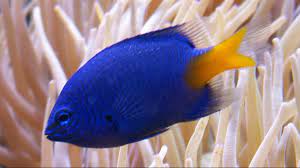
To successfully breed Yellowtail Damselfish, it is essential to be able to distinguish between males and females. Sexing these fish can be challenging, but there are several vital distinctions to look for. Males typically exhibit more vibrant colours and have a larger overall size than females. Additionally, during the breeding season, males develop a yellow hue on their anal fin.
Breeding Behavior and Conditions
Yellowtail Damselfish are monogamous breeders, forming pairs during the breeding season. During courtship, the male will display to the female by extending his dorsal fin and vibrating it rapidly. Once a pair forms, they will select a suitable location in the aquarium to lay their eggs.
When creating breeding conditions, it is essential to provide sufficient hiding places, such as caves or nesting sites, where the pair can lay and guard their eggs. The temperature of the water should be maintained between 78°F and 82°F (25.5°C and 27.8°C). Additionally, it is crucial to ensure high water quality and stable parameters to promote successful breeding.
Care of Eggs and Fry
Once the pair have laid their eggs, they will take turns guarding and fanning them to provide oxygen and minimize the risk of fungal infection. The eggs will hatch within a few days, and the fry will become free-swimming shortly after. At this point, ensuring that the fry has access to suitable food options, such as newly hatched brine shrimp or finely crushed flake food, is essential.
Challenges in Breeding in Captivity
Breeding Yellowtail Damselfish in captivity may present some challenges. One common issue is aggression between the breeding pair and other tank mates. It is crucial to provide adequate hiding places and consider separating aggressive individuals to prevent harm to the eggs and fry.
Another challenge is maintaining stable water parameters throughout the breeding process. Fluctuations in temperature or water quality can negatively impact the success rate of breeding attempts. Regular monitoring and appropriate adjustments are necessary to ensure optimal conditions for successful breeding.
Summary
Throughout this species guide, we have delved into the fascinating world of the Yellowtail Damselfish (Chrysiptera parasema), a visually striking species that captivates aquarists. We explored its taxonomy, physical characteristics, care requirements, diet, breeding, and more, providing comprehensive information for those interested in keeping these fish in their saltwater aquarium.
From its vibrant blue coloration and distinctive yellow tail to its behavior and temperament, we’ve covered every aspect of the Yellowtail Damselfish’s physical description. We also discussed the ideal aquarium requirements, including tank size, layout, suitable tank mates, and compatibility with live plants and invertebrates.
Care tips, including feeding, tank maintenance, and disease prevention, were shared to ensure the health and well-being of the Yellowtail Damselfish. We explored its dietary preferences, recommended foods, and feeding schedule to help aquarists maintain a balanced and nutritious diet for these fish.
Lastly, we delved into the intricacies of breeding and reproduction, including methods for sexing, breeding behaviour and conditions, and challenges in breeding in captivity. We provided insights into the care of eggs and fry, allowing enthusiasts to embark on the rewarding journey of breeding Yellowtail Damselfish.
In conclusion, we hope this guide has comprehensively understood the Yellowtail Damselfish (Chrysiptera parasema) and its care requirements in a saltwater aquarium. By following the guidelines and recommendations shared, aquarists can create a thriving environment for these captivating fish, ensuring their well-being and enjoyment for years.

